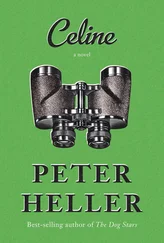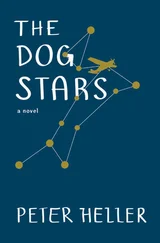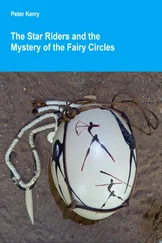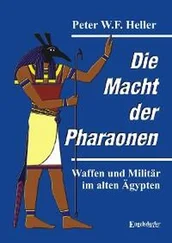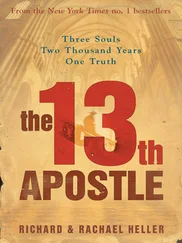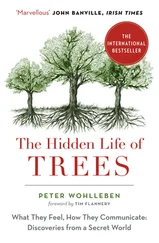5. Expressionism, as an artistic movement, is characterized by a preference for subjectivity over realism. Why do you think the author chooses to have Jim paint in this style? How do the concepts of realism versus subjectivity factor into the larger narrative concerns of The Painter ?
6. In the beginning of the novel, Bob advises Jim to “be good.” These words are echoed throughout the novel, particularly as Jim wrestles with his self-image in the face of his increasingly violent behavior. Discuss the difference between being good and goodness as described by Jim on this page. Is Jim a “good” person? What characters, if any, are “good” or display innate “goodness”?
7. On this page, Jim describes how he “disappear[s]” in awe when viewing certain paintings and certain scenes of nature. Discuss the choice of wording. How do both art and nature provide a means of escapism for Jim throughout the novel?
8. Explore Jim’s relationship with Irmina. How does he rely on her for emotional support throughout the novel? How does she provide guidance for him?
9. Jim is a mostly self-taught painter. Discuss the moment when he realized that he wanted to paint. How did his experiences in childhood and adolescence influence his decision?
10. Trace the events that cause Jim’s violent side to emerge throughout the novel. What, if anything, do these events have in common?
11. Discuss the significance of the painting of the horse and crow. Why do you think the painting has “changed” in his absence after he assaults Celia’s ex-boyfriend? ( this page)
12. Jim paints for himself, but also needs to paint as a means of economic stability. By the end of the novel, do you think he is more accepting of the relationship between creator and consumer, or do the events in Santa Fe harden him toward the interaction?
13. Discuss the “flash flood” as described on this page. Explore its symbolism in the narrative and the development of Jim as a character. Why do you think he signaled Jason? Was it an instinctual or merciful act?
14. Jim’s relationship with his art dealer, Steve, is fraught with tension. How did you view their relationship? Is it one of mutual respect? Of economic necessity? Do you think Steve is intimidated by Jim’s violent past?
15. When Jim goes to Santa Fe, he finds himself in the center of a media maelstrom, carefully constructed by Steve. Discuss Jim’s reaction to becoming a public figure. Why do you think he is most chagrined by the “blogger?” ( this page)
16. How does Jim’s guilt over his actions—both over Alce and his violent behavior—manifest throughout the novel? How does he take to the canvas to mitigate his pain?
17. As you were reading, did you think Jason was going to kill Jim in the last scene of the book? Why do you think he spared his life?
18. Jim inhabits many roles throughout the novel: artist, father, spouse, lover, fisherman, criminal, celebrity. Which role makes him happiest? Which brings about the most conflict in his life?
SUGGESTIONS FOR FURTHER READING
All the Pretty Horses by Cormac McCarthy; Plainsong by Kent Haruf; Winter’s Bone by Daniel Woodrell
FICTION
The Dog Stars
NONFICTION
Kook: What Surfing Taught Me About Love, Life, and Catching the Perfect Wave
The Whale Warriors: The Battle at the Bottom of the World to Save the Planet’s Largest Mammals
Hell or High Water: Surviving Tibet’s Tsangpo River
Set Free in China: Sojourns on the Edge
“Jim Stegner, celebrated painter, ardent fisherman and homespun philosopher, narrates this masterful novel, in which love (parental and romantic), artistic vision, guilt, grief, and spine-chilling danger propel a suspenseful plot… Heller is equally skillful at describing the creation of a painting as he is at describing the thrilling details of a gunfight. Here, he explores the mysteries of the human heart and creates an indelible portrait of a man searching for peace, while seeking to maintain his humanity in the face of violence and injustice.”
—
Publishers Weekly (starred)
“Heller’s writing is sure-footed and rip-roaring, star-bright and laced with ‘dark yearning,’ coalescing in an ever-escalating, ravishing, grandly engrossing and satisfying tale of righteousness and revenge, artistic fervor and moral ambiguity.”
—
Booklist (starred)
Praise for The Dog Stars :
“Extraordinary…. One of those books that makes you happy for literature.”
—Junot Díaz,
The Wall Street Journal
“This end-of-the-world novel [is] more like a rapturous beginning…. Remarkable.”
—
San Francisco Chronicle
“For all those who thought Cormac McCarthy’s The Road the last word on the post-apocalyptic world—think again…. Make time and space for this savage, tender, brilliant book.”
—Glen Duncan, author of
The Last Werewolf
“Heart-wrenching and richly written…. The Dog Stars is a love story, but not just in the typical sense. It’s an ode to friendship between two men, a story of the strong bond between a human and a dog, and a reminder of what is worth living for.”
—
Minneapolis Star-Tribune
“A dreamy, postapocalyptic love letter to things of beauty, big and small.”
—Gillian Flynn, author of
Gone Girl
“Heartbreaking.”
—
The Seattle Times
“A brilliant success.”
—
The New Yorker

THIS IS A BORZOI BOOK
PUBLISHED BY ALFRED A. KNOPF
Copyright © 2014 by Peter Heller
All rights reserved.
Published in the United States by Alfred A. Knopf, a division of Random House LLC, New York, and in Canada by Random House of Canada Limited, Toronto, Penguin Random House companies.
www.aaknopf.com
Knopf, Borzoi Books, and the colophon are registered trademarks of Random House LLC.
Grateful acknowledgment is made to the following for permission to reprint previously published material:
Houghton Mifflin Harcourt Publishing Company: Excerpts from “Burnt Norton” and “Little Gidding” from Four Quartets by T. S. Eliot, copyright © 1936 by Houghton Mifflin Harcourt Publishing Company, copyright renewed 1964 by T. S. Eliot. Copyright © 1942 by T. S. Eliot, copyright renewed 1970 by Esme Valerie Eliot. Reprinted by permission of Houghton Mifflin Harcourt Publishing Company. All rights reserved.
Random House: Excerpt from “The Panther” from Selected Poetry of Rainer Maria Rilke by Rainer Maria Rilke, translated by Stephen Mitchell, translation copyright © 1982 by Stephen Mitchell. Reprinted by permission of Random House, an imprint and division of Random House LLC. All rights reserved.
This is a work of fiction. Names, characters, places, and incidents either are the product of the author’s imagination or are used fictitiously. Any resemblance to actual persons, living or dead, events, or locales is entirely coincidental.
Library of Congress Cataloging-in-Publication Data
Heller, Peter, [date]
The painter : a novel / Peter Heller.—First Edition.
pages cm
HC ISBN 978-0-385-35209-3 (hardback);
EBK ISBN 978-0-385-35208-6
1. Artists—Fiction. 2. Abstract expressionism—Fiction. 3. Ex-convicts—Fiction. 4. Life change events—Fiction. 5. Psychological fiction. I. Title.
PS3608.E454P35 2014
Читать дальше


